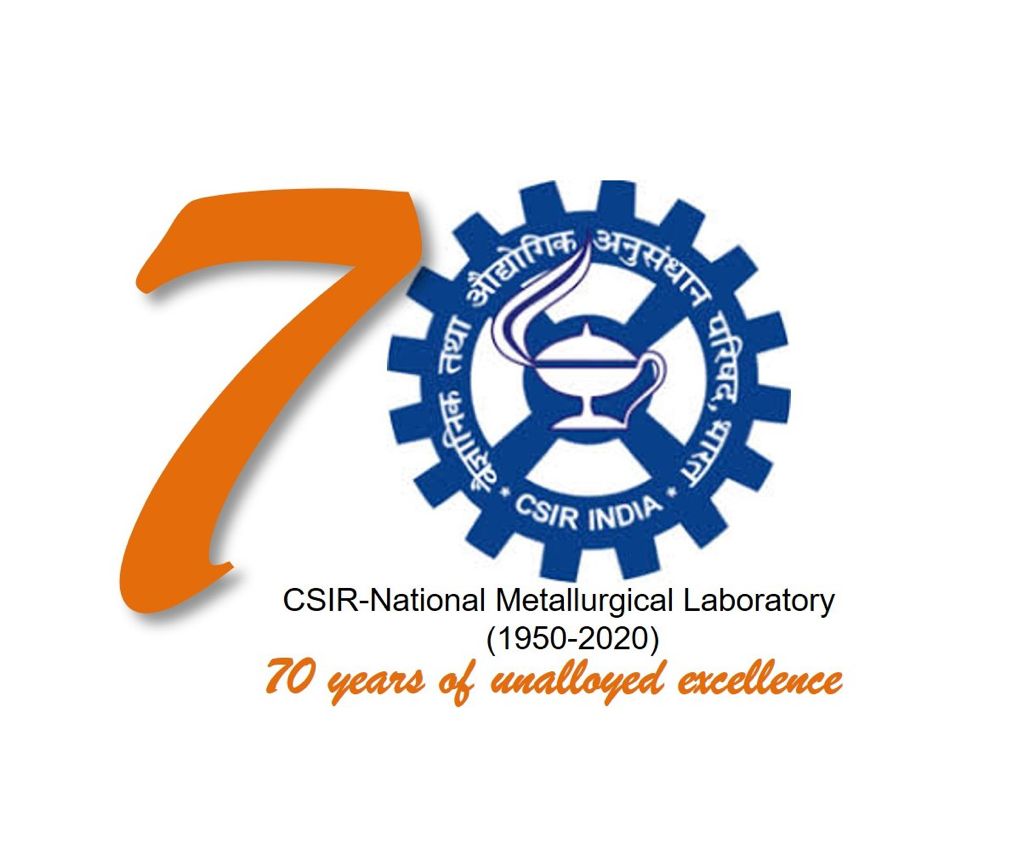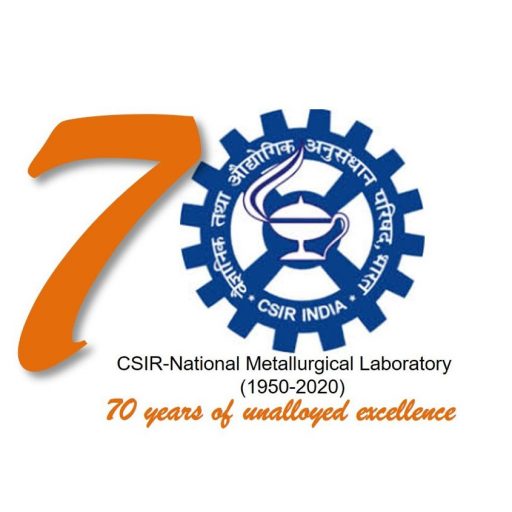Volume:62 Issue: 1-2 Jan-June 2020
Volume:62 Issue:1Jan' 1981
A brief review on the development of self-healing, hydrophobic and antifouling epoxy coating
Abstract
Epoxy coatings are the most used industrial coating system. While corrosion resistance through the barrier performance of the coating is well tested, the addition of multifunctionality is the new research objective. The responsiveness of the epoxy coating to the mechanical damage will not only add to its barrier performance but also delay the corrosion of the underlying metal. Such responsiveness of the coating is desired to manage the maintenance schedule. Various methods tested to add the “self-healing” attribute to the epoxy coatings are discussed. Surface modification to add hydrophobic character to the epoxy coating is also another functionality for value addition and is useful in many applications. For marine applications, fouling resistance is very important. Attempts made to develop anti-fouling epoxy coating are also reviewed. The brief review, giving a broad overview of the research trend, is intended to give a way forward in the development of the epoxy coating.
High performance specialized coatings for applications in corrosive environments
Abstract
In this paper a short review of various coatings developed based on facile as well as industrially scalable methods and the challenges encountered in enhancing the durability of the coatings in simulated service conditions are presented. These coatings include (i) development of noble metal (Pt/Pd) nanoparticle coated titanium electrodes for electrochemical processes employed in spent nuclear fuel reprocessing, and (ii) development of superhydrophobic (SHP) coatings on titanium, stainless steels, low-chromium steels and copper alloys to address corrosion and biofouling issues in chloride environments of condenser materials in nuclear power plants. Nanostructured noble metal (Pt, Pd) coatings on Titanium and titania nanotube for electrode applications were developed using a novel seed mediated coating technology involving electrodeposition assisted hydrothermal method. Studies demonstrated that by engineering the particle size of Pt, and nano-tubular self assembled arrays of TiO2 (TiNT), the electrocatalytic activity for methanol oxidation could be enhanced ten times compared to polycrystalline Pt. By employing electrochemical cerium oxidation studies, excellent durability of this Pt nanoparticles coated TiNT electrode surpassing 1000 h in 11.5M nitric acid was also demonstrated. In the second part of the manuscript development of SHP coatings to address corrosion and biofouling issues in chloride medium of condenser materials such as titanium, stainless steels, low chromium steels and copper alloys is detailed. Inspired by the lotus effect two step techniques were adopted for creating a micro-nano roughness pattern, and reducing surface energy by coating with low surface energy material. Micro-nano texturing of different materials was achieved by various methods like polishing, pickling, anodization, sand blasting etc. Attempted different organic fatty acids and silica nanoparticles mixed silane, to enhance durability. Finally durable and stable SHP coatings were demonstrated with high water contact angle and corrosion resistance and reduced microbial attachment indicating superior bio corrosion resitance of the materials studied. Facile techniques were adopted for both coatings in order to support scaling up for real time applications in future
Formation and growth of iron-zinc intermetallic during annealing treatment of galvanized steel
Abstract
The development of desired microstructure of galvannealed sheet requires in-depth understanding of the formation and growth kinetics of various Fe-Zn intermetallic phases in the coating during post-treatment after hot dipping of the strip in liquid zinc alloy bath. Keeping this in view, annealing treatment of as-received commercial galvanized sheets, obtained from low (0.135 wt.% Al) and high (0.2 wt.% Al) aluminium containing zinc bath, is carried out to examine the microstructure of annealed sheet with varying strip annealing duration at a fixed galvannealing temperature. The effect of the bath aluminium concentration on the formation of the inhibition layer and on the formation mechanisms of various Fe-Zn intermetallics during subsequent galvannealing (GA) treatment is investigated. Strip annealing simulation is performed using Gleeble® 3800 thermo-mechanical simulator. A detailed characterization of the annealed specimens is carried out to study the galvannealed microstructure produced with varying annealing parameters for both the galvanized specimens obtained from commercial liquid zinc alloy bath with varying aluminium content. A systematic study of annealing treatment of galvanized sheet is performed to enhance the understanding of the role of reacted aluminium present at the interface of the substrate and coating in controlling the nucleation and growth kinetics of Fe-Zn phases to obtain the optimum galvannealed structure. It is observed that high aluminium galvanized bath hinders the formation of the desired sequence of Fe-Zn intermetallics in the coating during annealing treatment. However, galvannealed coating formed using low Al-containing zinc bath shows the desired sequence of various Fe-Zn intermetallics with favourable galvannealed microstructure mainly consisted of compact delta (d) phase, particularly after annealing for 20s at 470°C.
Metallic gold thin film micropattern on polydimethylsiloxanefilm for flexible electronic sensors and circuits
Abstract
This work illustrates the importance as well as major challenges related to the development of malleable metallic Au thin film micropattern on soft elastomeric film and then presents a fabrication technique to overcome these challenges for developing reliable, flexible electronic sensors and circuits. A self-assembled molecular adhesive layer has been introduced between the polydimethylsiloxane (PDMS) and the thin metal film to increase the adhesion and then analyzed the multilayer structure. The contact angle measurement showed that the introduction (3-mercaptopropyl) trimethoxysilane (MPTMS) molecular adhesive layer increases the hydrophilicity of the PDMS film for a more extended period and Au film on MPTMS coated PDMS shows superior film quality. The random buckles formed on the thin Au film have been successively manipulated using controlled heating after micropatterning. The SEM analysis of the Au thin film confirmed that the deposited film is granular and filled with nanogaps. The electrical characterization of the deposited showed that the sheet resistance of the metal thin is higher compared to the Au thin film on Si surface. This investigation is beneficial for realizing reliable, flexible electronic devices and circuits on soft polymer.
Vacuum based coatings for engineering applications
Abstract
In the present modern age, vacuum based coatings are employed in every field of technology to reduce size and improve performance. The present paper briefly describes the physical concepts involved in vacuum coating for different applications along with technical details of necessary vacuum equipment.
Multifunctional properties of electrodeposited nickel composite coating containing nanosized monoclinic zirconia particles
Abstract
Nickel-based composite coatings containing ceramic particles as the distributed phase have been widely used in aerospace and automotive industries. In the present work, a Ni-composite coating containing nanosized monoclinic zirconia (ZrO2) powder is prepared by solution combustion (SC) method. The SC method is modified to get phase pure white zirconia powder by using the mixture of fuels approach. Since the synthesized powder contained agglomerated particles, the powder is ball milled and dispersed in a nickel sulphamate bath. The Ni and Ni-ZrO2 coatings are electrodeposited at 0.75 A/dm2 for 6 h. The Ni-ZrO2 composite coating exhibits a microhardness of 750 KHN(50 gf) as against 270 KHN(50 gF) observed for plain Ni coating. The Ni-ZrO2 coating exhibits improved corrosion resistance and wear resistance compared to plain nickel coating as confirmed by potentiodynamic polarization and continuous salt spray tests. The as-deposited hydrophobic Ni-ZrO2 coating transforms to superhydrophobic upon depositing a thin layer of fluoroalkyl silane on the coating. Thus, the synthesized zirconia particles when incorporated in the Ni matrix impart multifunctional properties to the electrodeposited Ni coating.
Techniques for investigation: Semiconductor/electrolyte interface processes in photoelectrochemical cell for solar water splitting
Abstract
Photoelectrochemical water splitting process for solar hydrogen production has attained great consideration due to acceptance of hydrogen as a sustainable and environmentally friendly energy carrier. The key functional components of a PEC cell are the semiconductor electrode and semiconductor-electrolyte interfacial junction. The semiconductor-electrolyte interface, the other crucial functional unit of PEC cell is rarely investigated. The nature of the charge carrier’s movement at the semiconductor/electrolyte interface is fundamental for the optimization of semiconductor electrode performance for efficient hydrogen generation. To understand the above processes at the interface, various techniques are being used to investigate the electrochemical reactions and photocatalytic response of a stable photoelectrode. In this review, the charge transfer kinetics and various methods used to investigate the e-/h+ transfer processes at the semiconductor/electrolyte interface are reviewed and discussed.
Effect of annealing on structure and properties of pulse electroplated Ni-W alloy coating
Abstract
The structure and properties of Ni-W alloy coatings, deposited through pulse-plating route from an aqueous sulphate-citrate bath, have been evaluated and compared with those of coatings annealed under vacuum for durations of 2 h, 4 h or 6 h. The effect of annealing on microstructural evolution of the alloy coatings has been examined with emphasis on identification of constituent phases by X-ray diffraction, along with studies of their morphology by scanning and transmission electron microscopy with selected area electron diffraction. Annealing of Ni-W alloy coatings has resulted in the replacement of globular cluster-type appearance by a faceted morphology with the increase in crystallite size and reduction of the micro-strain in the alloy matrix. Both Nanoindentation hardness and elastic modulus of the coatings appear to reach their peak values on annealing for 2 h owing to the formation of NiW and Ni4W intermetallic phases. However, on annealing for durations ≥4 h, the hardness is decreased owing to grain coarsening, whereas the Young’s modulus is lowered due to diffusion of Cu from the substrate. The corrosion resistance of the annealed Ni-W alloy coatings, evaluated through potentiodynamic polarization technique, is found to be inferior as compared to that of the as-deposited coatings.
Vacuum furnaces for metallurgical processing
Abstract
Large scale vacuum furnaces are becoming crucial in metallurgical processes like melting, casting, heat treatment, degassing, annealing and brazing. The vacuum conditions help in reducing contamination (like oxidation) and improve the micro-structure to get favourable metallurgical properties for industrial applications. The vacuum also reduces the melting and boiling points of metals and alloys, thereby reducing the electrical power requirement in high temperature furnaces for clean metallurgical processing. The present paper describes the design criteria of vacuum metallurgical furnaces involving vacuum equipment, heating elements and process instrumentation.
| Sr No. | Article Information |
|---|---|
| 1 | Author(s):
S. S. ANANTHAPADMANABHAN, GEETANJALI MISHRA, SMRUTIRANJAN PARIDA. Page No : 1-11 |
| 2 | Author(s):
S.C. VANITHAKUMARI, R.P. GEORGE, U. KAMACHI MUDALI. Page No : 13-27 |
| 3 | Author(s):
G.K. MANDAL1. Page No : 29-47 |
| 4 | Author(s):
A. KAKATI, S.Das. Page No : 49-55 |
| 5 | Author(s):
V. VASUDEVA RAO, V. RAVINDRA. Page No : 57-61 |
| 6 | Author(s):
S.T. ARUNA, S. LATHA, R.V. LAKSHMI. Page No : 63-74 |
| 7 | Author(s):
DIPIKA SHARMA, SAKSHI GUPTA, B. R. MEHTA. Page No : 75-84 |
| 8 | Author(s):
CHINMAYA KUMAR SARANGI, BIBHU PRASAD SAHU, BARADA KANTA MISHRA, RAHUL MITRA2. Page No : 85-96 |
| 9 | Author(s):
V VASUDEVA RAO, V RAVINDRA. Page No : 97-101 |

